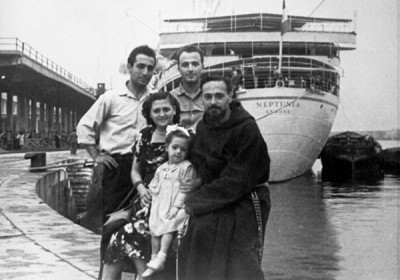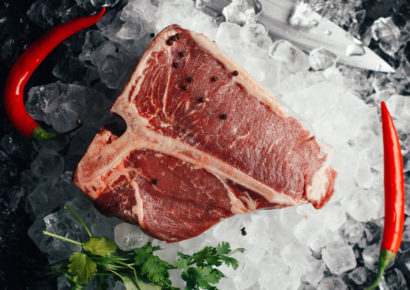We’re blessed to live in a city that in its short history has welcomed migrants from every corner of the globe.
We’re home to residents from about 180 different countries, we speak 233 different languages and dialects, and follow close to 116 different religious faiths. Our amazing multiculturalism has had an impact on our arts and culture, on Melbourne’s thriving fashion scene, the sports that reign supreme in the city – and, most notably, it has made Melbourne the culinary destination it is today.
Whether it’s the whiffs of pizza and pasta you get from the Italians walking through Carlton, stopping for a cheeky Greek souvlaki on Lonsdale Street, or a cheap and cheerful phoở on Victoria Street, the cliché of ‘there’s something for everyone’ couldn’t be truer.
Our first wave of migration – we’re ignoring our British forefathers here, what with their massacres and all – was during the Gold Rush. Apart from the UK, the biggest migrant populations were German and Chinese. In fact, the Chinese came to hunt for gold in such droves that by 1861, seven percent of Victoria’s population was Chinese. They set up shop on Melbourne’s Little Bourke St – which to this day is still Melbourne’s Chinatown, home to an endless supply of amazing dumplings, teahouses and Asian groceries. As well as introducing herbal teas, they brought ‘exotic’ ingredients into what was previously very British cuisine – flavours like ginger, lime and chilli (we are forever in their debt, guys).
Melbourne’s major migration story – and the food history that goes alongside it – really starts in the post-war era. Once WWII was over, thousands of displaced people from war-torn Europe began to arrive and Australia began to look thoroughly multicultural.
From 1947 onwards, the Mediterraneans came to Melbourne in their thousands. So much so that Melbourne still has the largest Greek population anywhere outside of Greece. We also welcomed Italians, Turks and those from Lebanon, and with them came more diverse meat, fish and poultry, pasta, olive oil and new types of cheese. They pioneered European coffee techniques, winemaking and what we know now as ‘cafe culture’.
Though Melburnian Jews fleeing Nazism opened Polish, Hungarian and Russian-style cake shops through the 1940s, the humble cafe as we know it now – a place of social gathering as much as food – is a Mediterranean import. In other words, how did we ever live without them?
Slowly, through the 1960s and 1970s, the restrictive Dictation Test and White Australia policies banning immigration for non-Europeans were relaxed, then abolished. This opened the door to
another wave of Chinese migration, as well as Indian and Sri Lankan groups alongside Vietnamese refugees – giving us the diverse range of Asian cuisines and ingredients we take for granted today, culminating in our own ‘Asian Fusion’ style of cooking and shared eating that is the trend in so many restaurants you’ll find across Melbourne.
Though European and Asian cultures have undoubtedly had the biggest impact on what and how we eat, our brilliant city is always changing and growing, and so are its influences on our cuisine. Refugees and asylum seekers from countries like Sudan, Myanmar, Syria and Afghanistan are increasing, and if you head out to multicultural epicentres like Dandenong and Footscray, you’ll find a multitude of cuisines you wouldn’t even have thought to try. And if history has taught us anything, they’re well worth it.

